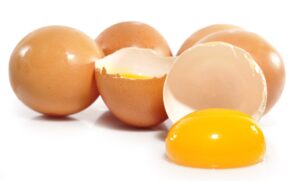
How to Get Enough Vitamin K2 in your Diet
To get enough Vitamin K2 in your diet, you need to plan carefully. This is because Vitamin K2 is a very difficult nutrient to get in enough of from your diet.
There are four reasons for this.
Food sources of Vitamin K2 are rare.
You don’t accidentally eat vitamin K2 very often. While Vitamin K1 is easier to consume (relatively), if you don’t consciously try to eat K2 rich foods, you’re likely not eating enough. K2 is contained in a certain set of foods that people are less aware of.
Vitamin K2 levels in food are preparation-dependent.
Levels of Vitamin K2 in foods will vary depending on how they’re treated or prepared.
Animal products need to come from animals that were pasture raised. If dairy cattle feed on grain or soy, they do not get the K1 from the grass. This means they don’t convert it to Vitamin K2, so in turn, we don’t receive it from products produced by these animals.
But even when cows are fed hay, eating dead hay may not produce K2 rich dairy products.
One dozen eggs a day from caged hens won’t supply enough K2 for your daily requirement, whereas two to four eggs a day from pasture-raised hens may provide adequate K2.
Egg yolk from The Netherlands is reported to have twice as much K2 as egg yolk from the United States.
Fermented foods also provide a different form of vitamin K2, however it needs to be cultured properly and then stored in a refrigerator, not pasteurized or contaminated. Today we eat far less fermented food rich in Vitamin K2.
Vitamin K2 needs to be consumed with a host of other nutrients.
To receive the health benefits of vitamin K2, your body needs other factors. The two main factors are the fat-soluble vitamins A and D.
But… Vitamins A and D also require the fat-soluble nutrient support factors.
These are:
- Dietary fat (including saturated fat)
Consumption of trans fats blocks the action of K2. While trans-fat consumption is now reducing, this has been a factor in our diets. It’s likely that polyunsaturated vegetable oils (seed oils) don’t allow proper absorption of vitamin K2 in the digestive system.
For best absorption, fat should be low in polyunsaturated fatty acids, which means that butter and other animal fats, tropical oils, olive oil and avocado oil are best.
Comparatively, soybean oil, canola oil, the regular varieties of sunflower and safflower oil, grape seed oil, and most other oils derived from nuts and seeds are much less helpful for K2 absorption.
Notably, many of the foods richest in K2 like cheese, meat, and egg yolks are themselves rich in fat. The total fat content of the meal is what is important, so the more natural fats within the foods, the less you have to add.
The other main support factors for the fat-soluble vitamin system are:
- Magnesium (read more here about magnesium)
- Zinc
- Calcium
Certain medications deplete K2 or inhibit its absorption:
If you take these medications, they make increase your risk of vitamin K2 deficiency. Even if you’re getting enough from your diet, your levels in the body could still be low.
- Statins
- Broad spectrum antibiotics
- Bile acid medications
- Orlistat – a weight-loss drug (Alli) which reduces absorption of fat-soluble vitamins, including vitamin K.
What are the best food sources of Vitamin K2?
Currently, there’s no overdose measure for Vitamin K2 and you’re highly unlikely to overdose from nutritional sources. So choose your preferred foods below, making sure you’re getting a mix of MK-4 and MK-7 vitamin K2 in your diet.
Vitamin K2 MK-4 rich food sources
- 2/3oz of chicken, duck or goose liver pate
- 3-4 large pasture raised eggs
- 3-4 tablespoons of grass raised butter or ghee [Here’s a well sourced grass raised Ghee]
- 6-12oz serves chicken leg and thigh meat
- 2-3 slices of organic beef or lamb liver [Here’s well sourced grass-fed beef liver capsules]
- Beef mince
- Emu Oil [Here’s some well sourced Vitamin K2 rich Emu Oil]
*Keep in mind, some of these measurements are estimates. Food levels of Vitamin K2 aren’t well understood and there may be more or less K2 in each of these food sources.
**Traditional diets may have been estimated to give dosages of Vitamin K2 MK-4 in up to 400-500mcg per day.
Vitamin K2 MK-7 rich food sources
- 1/2oz to 2/3 oz Natto
- Sauerkraut
- Kefir or yoghurt
- 5-10oz hard cheeses
- 5 ounces Edam cheese
Natto is a standout food because of its concentration of Vitamin K2 MK-7. One caveat of this is that it’s only really consumed in certain parts of Japan.
That may mean that most people may not convert high doses of MK-7 to MK-4. You should aim to have some source of MK-4 too.
Note:
Different types of bacteria are used in the fermentation.
For example, in each 100g serving, Jarlsberg contains 74 μg of Vitamin K2 while blue cheese contains 36, cheddar contains 21, Swiss contains 8, and mozzarella only contains 4. This variation can also be seen among fermented plant foods. For example, sauerkraut has only 5 μg, compared to nearly 1000 for natto.
(Source: Chris Masterjohn’s Ultimate K2 Resource)
Here are some Vitamin K2 source tables:
Food Sources of Vitamin K2 (MK-4)
Food 100g Micrograms
| Goose Liver Paste | 369.0 |
| Egg Yolk (Netherlands) | 32.1 |
| Goose Leg | 31.0 |
| Egg Yolk (United States) | 15.5 |
| Butter | 15.0 |
| Chicken liver (raw) | 14.1 |
| Chicken Liver (pan-fried) | 12.6 |
| Chicken breast | 8.9 |
| Chicken leg | 8.5 |
| Ground beef (medium fat) | 8.1 |
| Bacon | 5.6 |
| Calf liver | 5.0 |
| Whole milk | 1.0 |
| Salmon | 0.5 |
| Mackerol | 0.4 |
| Egg white | 0.4 |
| Skim Milk | 0.0 |
| Fat-free Meats | 0.0 |
Food Sources of Vitamin K2 (MK-7)
Food 100g Micrograms
| Natto | 1103.4 |
| Hard cheeses | 76.3 |
| Soft cheeses (brie) | 56.5 |
| Curd Cheeses | 24.8 |
| Cheddar cheese | 10.2 |
| Sauerkraut | 4.8 |
Food Sources of Vitamin K1 (mcg)
| Collards, frozen, boiled, ½ cup | 530 | 662 |
| Turnip greens, frozen, boiled ½ cup | 426 | 532 |
| Spinach, raw, 1 cup | 145 | 181 |
| Kale, raw, 1 cup | 113 | 141 |
| Broccoli, chopped, boiled, ½ cup | 110 | 138 |
| Soybeans, roasted, ½ cup | 43 | 54 |
| Carrot juice, ¾ cup | 28 | 34 |
| Edamame, frozen, prepared, ½ cup | 21 | 26 |
| Pumpkin, canned, ½ cup | 20 | 25 |
| Pomegranate juice, ¾ cup | 19 | 24 |
| Okra, raw, ½ cup | 16 | 20 |
| Salad dressing, Caesar, 1 tablespoon | 15 | 19 |
| Pine nuts, dried, 1 ounce | 15 | 19 |
| Blueberries, raw, ½ cup | 14 | 18 |
| Iceberg lettuce, raw, 1 cup | 14 | 18 |
Vitamin K1 travels to our livers more effectively than it does to our bones or blood vessels. The liver is where we use Vitamin K to make the proteins involved in blood clotting. It is also converted in unknown quantities to Vitamin K2 MK-4.
For a full list, you can find a great food resource here.
Vitamin K2 Vegan Food Sources
Because vitamin K2 is produced either in animals or bacteria, getting enough from a vegan diet can be an extra challenge.
Vitamin K2 MK-4 cannot be sourced from vegan sources, so if you are a vegan, you can use supplements to obtain your MK-4.
Vitamin K2 MK-7 is sourced from fermented foods, although exact amounts aren’t known.
These include:
- Natto
- Sauerkraut
- Other probiotic foods [Here’s a well-sourced probiotic supplement]
Now I want to hear from you.
What’s your favorite source of Vitamin K2? Have you felt the health benefits since including more in your diet? Please leave your questions in the comments below.
For more information on Dr. Lin’s clinical protocol that highlights the steps parents can take to prevent dental problems in their children: Click here.
Dr Steven Lin’s book, The Dental Diet, is available to order today. An exploration of ancestral medicine, the human microbiome and epigenetics it’s a complete guide to the mouth-body connection. Take the journey and the 40-day delicious food program for life-changing oral and whole health.
Click below to order your copy now:
US AMAZON
US Barnes & Noble
UK AMAZON
Australia BOOKTOPIA
Canada INDIGO
References:
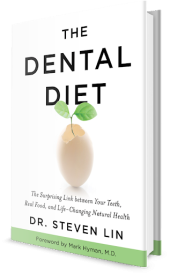
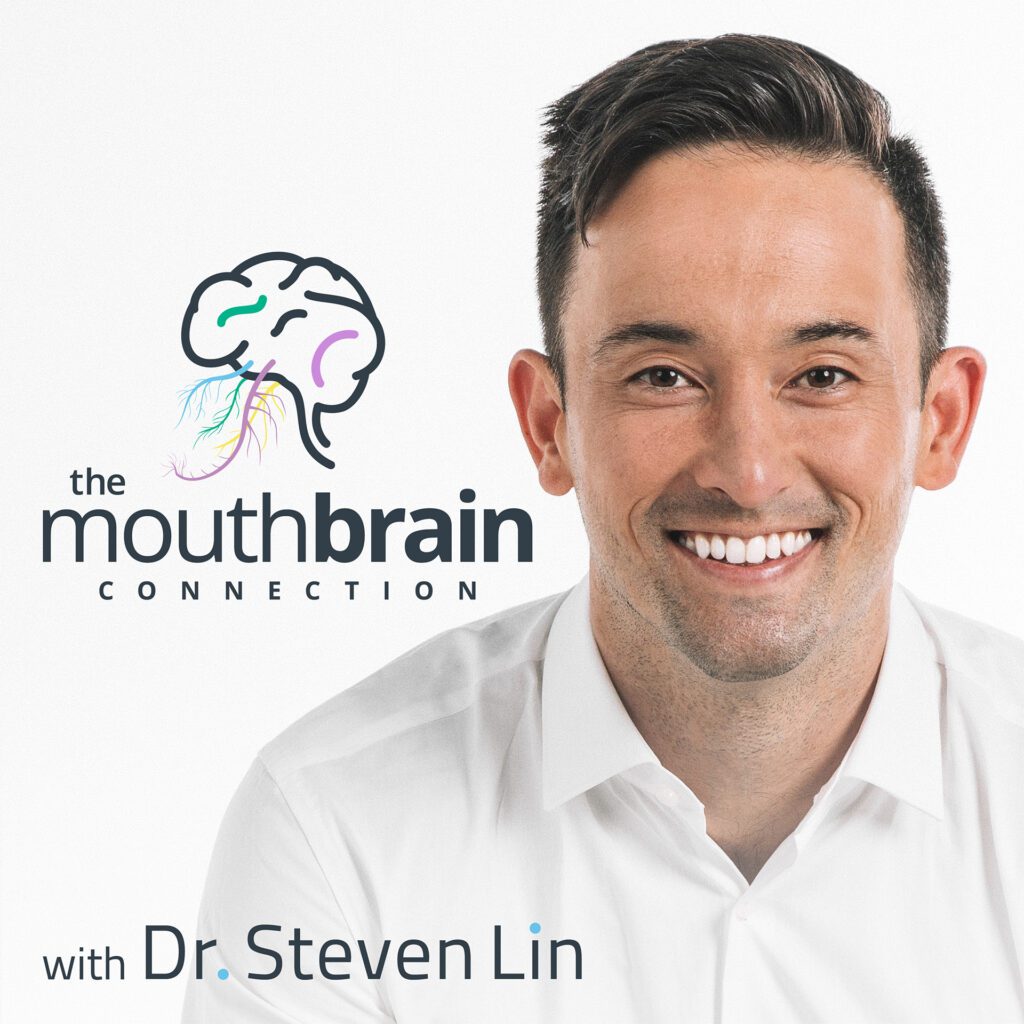

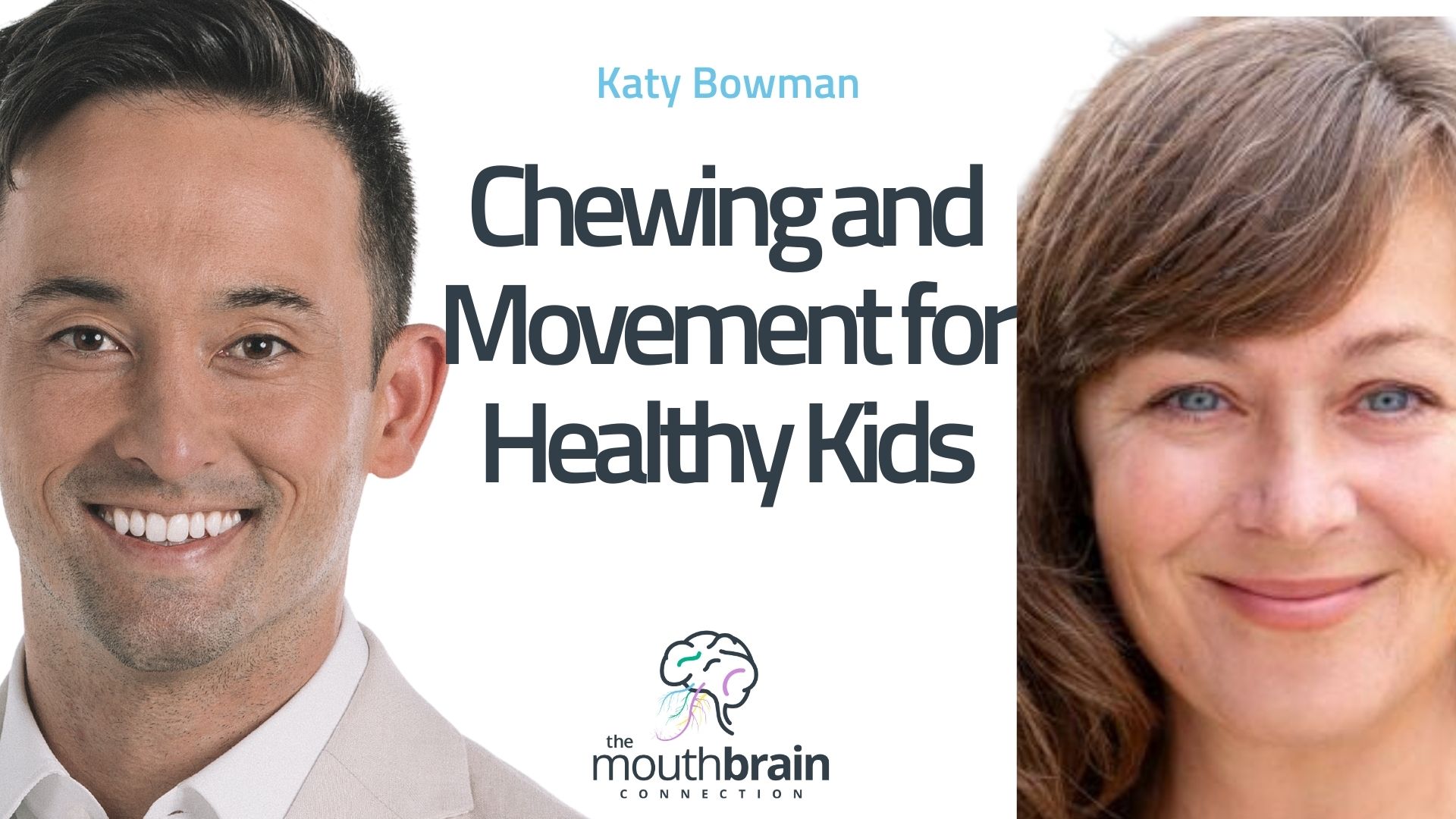

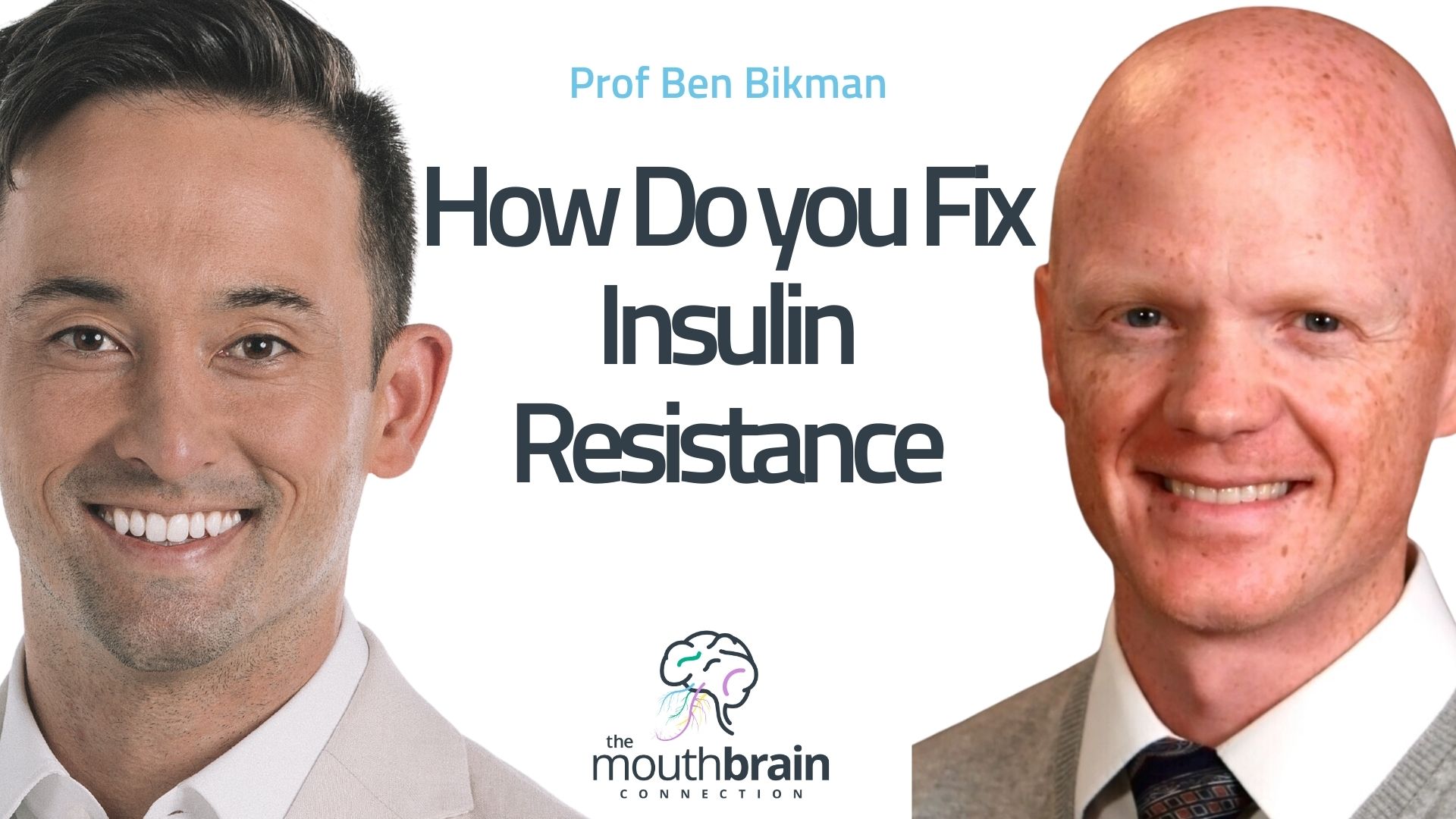

12 Responses
We’ve introduced kefir and sauerkraut and Gouda and Brie into my diet to increase vitamin K2 into my diet(osteopenic at 54). I regularly “fancy” avocado. What I have noticed since being mindful of specific vitamins I now require is that my cravings are for the vitamin K2 rich foods I’ve added! I absolutely LOVE sauerkraut (whilst my husband can take it or leave it!) ! Is this my body knowing I’m needing it perhaps?
Dear Dr. Lin
Could you please help me understand something? You write that K2 MK-4 cannot be sourced form vegan sources, but a couple of paragraphs prior to this comment you mention that K1 is converted to K2 MK-4. So if K1 is converted, from vegan sources, into K2 MK-4 and K2 MK-7 can be found in fermented vegan foods, is there still an issue for vegans in getting enough K2? Lastly, if the animals who eat green leafy vegetables are able to convert K1 into K2, is there evidence to show that we cannot do the same?
Thank you for any clarification.
Hi Paul, great question. K1 is converted in varying amounts depending on genetic capabilities of an individual. Some people will convert more and will do better, however in every traditional human cuisine, across the glob and cultures are sources rich in MK-4. MK-4 has different physiological roles, and is absorbed quickly from dietary sources. This article explains this process: https://www.drstevenlin.com/what-is-vitamin-k-everything-you-need-to-know-about-k1-and-k2/
Vegans can have trouble getting vitamin A too. We’re not good at converting beta-carotene and it’s possible that 47% of people can’t do it at all.
Dear Dr. Lin,
Thank you for giving us this valuable information regarding K2. Still struggling but trying to reverse my dental cavities from 3 years. Recently I noticed my cavities are spreading at a slower pace to other teeth. I have been taking FCLO , no phytic acids foods, more veggies and supplemented vitD3. But still no good results as I hoped. You have mentioned different types of K2 (MK4-MK-7,etc) Which one is a good K2 supplement to help with dental cavities problem. And any good produtcs that you would recommend.
Thank you.
Hi Ruhi,
I suggest getting both MK-4 and MK-7 as they have different roles in the body:
https://www.drstevenlin.com/how-to-choose-the-right-vitamin-k2-supplement/
Dr. Steven Lin
Is it true MK7 can keep you awake at night? I’ve been avoiding it since I already have problems with sleep
Sourcing K2 has been a problem for me – I have many food sensitivities. I can’t eat any dairy (not even clarified butter), soy or fermented foods (I get VERY sick if I try to eat them). So there are no available sources of MK-7 for me. I can’t eat eggs either. So it seems that the only high source of MK-4 for me is goose liver or goose meat – but there are so few organic farmers in my region who raise pastured goose, that I might only have access to 10 livers a year.
What can I do? For the first time as an adult (age 43), I have 2 huge cavities that I would really like to heal if possible…
RE: FOOD ALLERGIES:
When my son was a baby, he became allergic to milk. he was constantly unwell as he developed more food intolerance’s. A friend, a nurse, gave me Adele Davis book ‘ Let’s Eat Right to Keep Fit’. (35 years ago). I started to give my son a B complex, B5 and lambs liver each week. Within a few days. Magic, no more ‘new’ diet problems. My daughter was getting asthma – and was okay until she stopped taking B vits and eating liver, when she went to university.
RE: VIT. E
My son failed all his medical tests and the doctors thought he was spastic. I gave him Vit E, and got him walking at 2 years old. I told a colleague about it – and he got his son walking at 3 years old.
I had a loose tooth for about a year that the dentist and hygienist checked when I had my teeth cleaned. I started taking a supplement of K2 mk-7 100mcg per day and the last time I saw them, my tooth was no longer loose. Now I need to wait one year until I can have a DEXA scan for bone health to see if there is any improvement in my osteopenia. I do probiotic sauerkraut and was disappointed to see that it has a low K2 content.
Synergia Life Sciences brings the most valuable bioactive natural agents.
They have world class Natural Vitamin K2-7 products i.e. MenaquinGold® and Best Probiotics HU58, HU36, SC208, SC307 and SC 109.
For More Information Visit:
https://www.synergialifesciences.com
Natural Vitamin K2-7 is very important for healthy life e.g. Bone health, Diabetes management and Muscle health etc.
MenaquinGold is the most researched natural vitamin k2.
This is properly explained in this page.
https://www.synergialifesciences.com/natural-vitamin-k2-menaquingold.html